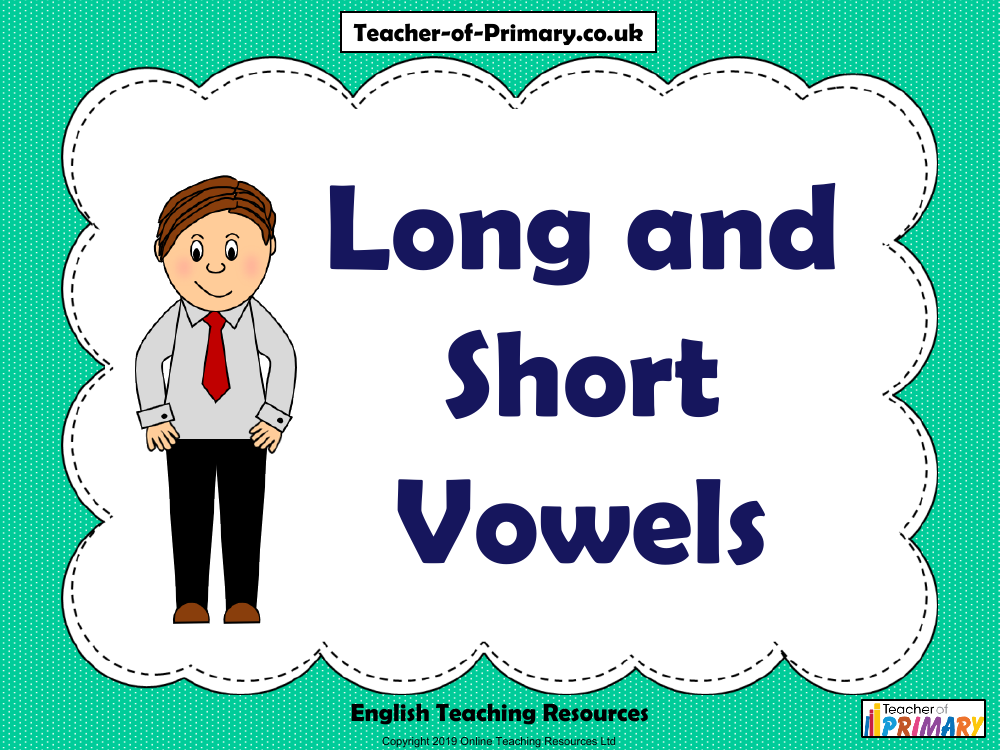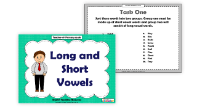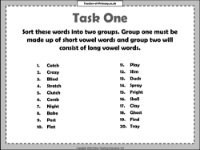Long and Short Vowels - PowerPoint

English Resource Description
This educational resource is designed to help students understand the difference between long and short vowel sounds, a fundamental aspect of English spelling. The objective is straightforward: to learn how to distinguish between the two types of vowel sounds. Short vowels are explained as making the sound of the letter itself, while long vowels say the name of the letter. Using the word 'wind' as an example, students explore how the same word can have different vowel sounds in different contexts, such as 'the wind blew through the trees' (short vowel) and 'Dad had to wind the car window down' (long vowel).
Students are then given tasks to reinforce their understanding of long and short vowels. In Task One, they sort a list of words into two groups based on the vowel sounds. This activity helps to consolidate their learning by distinguishing between words like 'catch' (short vowel) and 'crazy' (long vowel). Task Two invites students to use different colours to write out words, indicating whether the vowels are long or short. An example is provided with the words 'volcano' and 'robot'. Finally, Task Three focuses on how adding 'e' or 'le' to the end of root words can change the vowel sound, as in 'rip' becoming 'ripe' or 'tab' becoming 'table'. Students are encouraged to use resources such as dictionaries or the internet to find more examples, demonstrating the practical application of the concepts they have learned.

